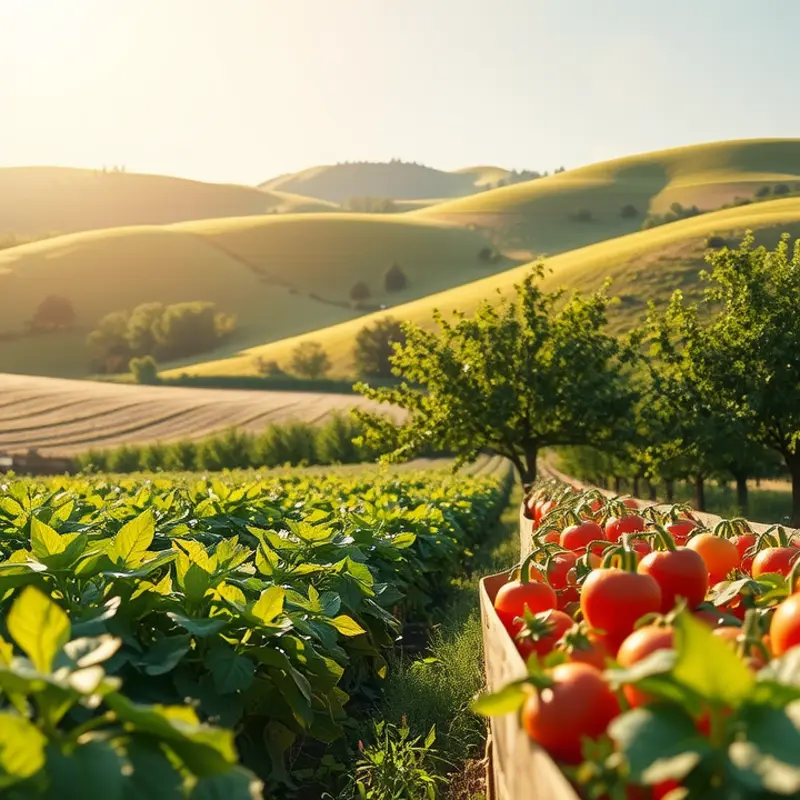Curiosity about plant-based diets is on the rise, especially regarding nutrient-rich options like high-protein foods. Many are eager to find effective ways to incorporate protein into their meals without animal products. This growing demand for clarity reveals a wealth of delicious and fulfilling plant-based protein sources. In this guide, explore the world of high-protein vegan foods that promote health, satisfaction, and sustainability.
Unlocking the Protein Potential of Plants

Exploring plant-based proteins reveals a world rich in nutrition and versatility. The plant kingdom offers a diverse array of foods packed with protein to meet daily nutritional needs. These protein sources might surprise many with their ability to sustain an active lifestyle without compromising on taste or variety.
Legumes, such as lentils, chickpeas, and black beans, are staple proteins in plant-based diets. A cup of cooked lentils provides about 18 grams of protein along with fiber, enhancing digestive health. Chickpeas, another powerhouse, shine in dishes like Mediterranean Chickpea Salad, combining flavor and nutrition effortlessly. Beans, rich in numerous minerals, are gluten-free and contribute significantly to heart health with their low-fat content.
Soy products, including tofu, tempeh, and edamame, offer complete proteins containing all essential amino acids. Tofu, famous for its adaptability, can absorb flavors and transform into a variety of dishes. A 100-gram serving of tofu contains about 8 grams of protein, making it a valuable ingredient in protein-rich vegan meals. Tempeh, with its nutty flavor and high protein content, is beneficial for gut health due to fermentation.
Quinoa, a pseudocereal, is another excellent protein source, contributing around 8 grams per cup once cooked. Quinoa is gluten-free and packed with nutrients like magnesium, iron, and fiber. Its versatility allows it to substitute rice or pasta and enhance the nutritional profile of salads and bowls.
Nuts and seeds, although often consumed for their healthy fats, are latent protein-rich foods. Almonds and sunflower seeds deliver around 6 grams of protein per ounce. They are ideal as snacks or perfect for adding crunch and nutrition to salads and oatmeal. Additionally, chia and hemp seeds, known for omega-3 fatty acids, support heart health and bolster protein intake.
Leafy greens and vegetables also contribute to protein intake. Spinach and broccoli, though traditionally considered side dishes, offer protein alongside a plethora of vitamins and antioxidants. These vegetables reduce the risk of chronic diseases and should be included in abundant amounts in a balanced meal plan.
Meeting daily protein needs solely from plants requires a strategic approach. Combining different protein sources ensures a complete amino acid profile, vital for muscle repair and growth. For example, pairing beans with rice forms a complete protein, enhancing nutritional intake.
Integrating plant proteins into meals is both creative and satisfying. Breakfast can feature tofu scramble or overnight oats with chia seeds. Lunch options abound, from hearty lentil soups to vibrant salads topped with quinoa and chickpeas. Dinners might showcase marinated tempeh with stir-fried vegetables, offering both taste and nutrition.
Adopting plant-based proteins supports not only health benefits like improved heart and digestive health but also the environment. These proteins require fewer resources to produce and align with sustainable eating practices. Plant proteins present a viable, efficient way to maintain health and wellness within a vegan framework, encouraging exploration and enjoyment of diverse flavors and textures.
Satisfying Recipes for High-Protein Vegan Meals

Get ready to dive into a world of satisfying and protein-rich vegan dishes that are as delicious as they are nutritious. Here’s how to create meals using legumes, grains, nuts, and seeds that you’ll want to make time and again.
Chickpea Quinoa Salad is a refreshing and protein-packed dish. Combine cooked quinoa and a can of rinsed chickpeas in a large bowl. Add diced cucumbers, cherry tomatoes, and red onion. Dress with lemon juice, olive oil, salt, and pepper. Mix and serve chilled. This colorful salad offers about 10 grams of protein per serving. Amp up the flavor with a sprinkle of cumin or a handful of fresh parsley.
Tofu Stir-Fry is another hearty option, packed with flavors and nutrients. Cut firm tofu into cubes and fry until golden. Remove and stir-fry a mix of your favorite vegetables like bell peppers, broccoli, and snap peas. Add the tofu back with soy sauce, garlic, and ginger. This vibrant dish provides approximately 15 grams of protein per serving. Finish with sesame seeds to enhance texture and taste.
For breakfast or a light meal, try a Lentil Avocado Toast. Mash an avocado on a slice of whole-grain bread and top with cooked green lentils. Add cherry tomatoes and season with lime juice, salt, and pepper. This simple yet delicious toast contains around 12 grams of protein. Garnish with chili flakes or nutritional yeast for a flavor twist.
Are you looking for a dessert with a protein punch? Consider making a Chocolate Chia Seed Pudding. Combine chia seeds, almond milk, cocoa powder, and maple syrup. Refrigerate until thick and creamy. Each serving packs nearly 8 grams of protein, thanks to the chia seeds. Top with fresh berries or nuts for added delight.
Cooking tips for these recipes are straightforward. For legumes like lentils and chickpeas, pre-cook large batches to have them ready for quick meal prep. When dealing with tofu, pressing it with a weight before cooking helps eliminate excess water, allowing for better flavor absorption.
Blending flavors is key to these dishes. Pair savory and sweet, or spicy and tangy, to keep your taste buds intrigued. Fresh herbs, spices, and citrus juices can transform simple ingredients into something special.
Inspired to experiment in your kitchen? High-protein vegan foods offer immense versatility and satisfaction. Each recipe is a testament to the power of plant-based eating, ensuring meals that are as nourishing as they are delightful.
Final words
Adopting a high-protein vegan lifestyle doesn’t have to be a challenge. With a broad array of plant-based protein sources available, you can easily meet your nutritional needs while enjoying myriad flavors and textures. The key lies in understanding these foods’ potential and experimenting with new recipes. By embracing the diversity of vegan proteins, you can create satisfying meals that nourish your body and spirit, contributing to a healthier lifestyle.








